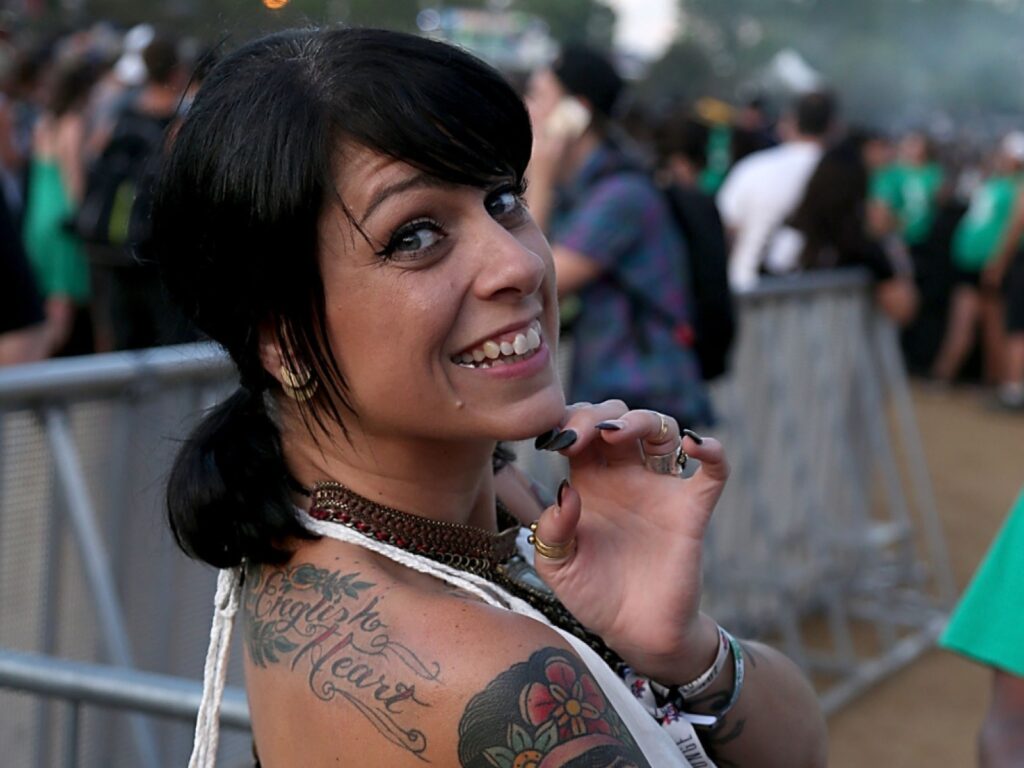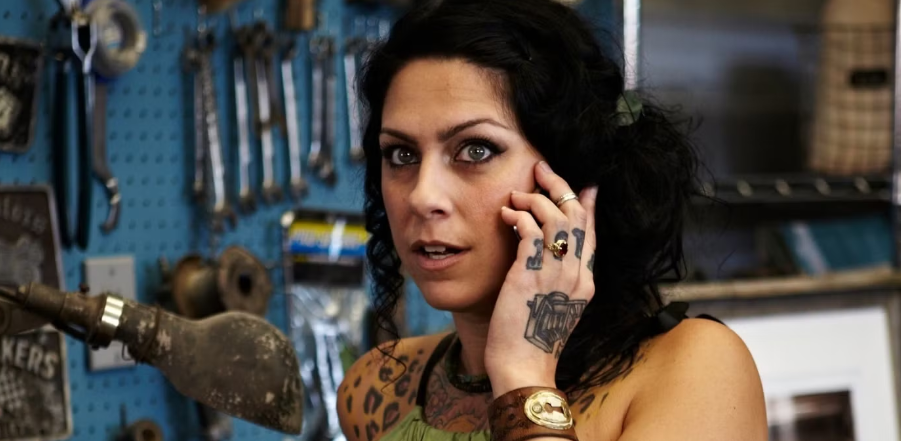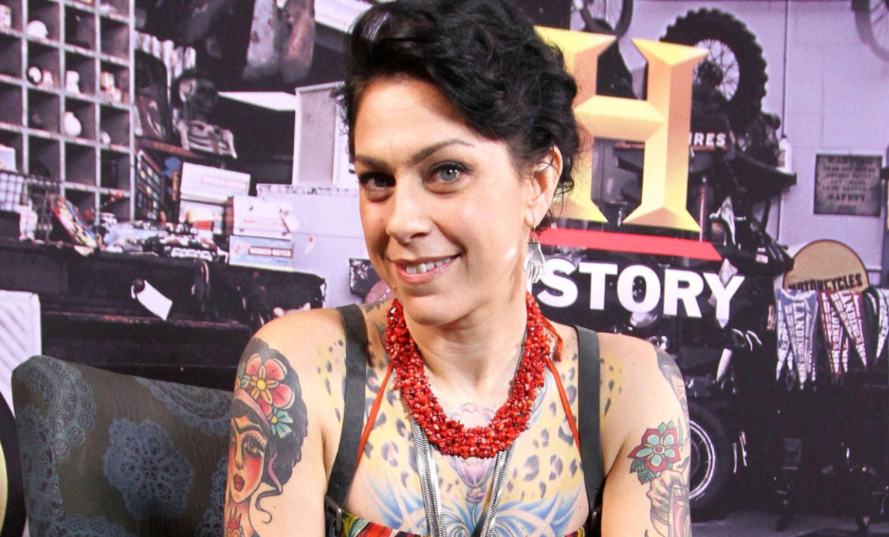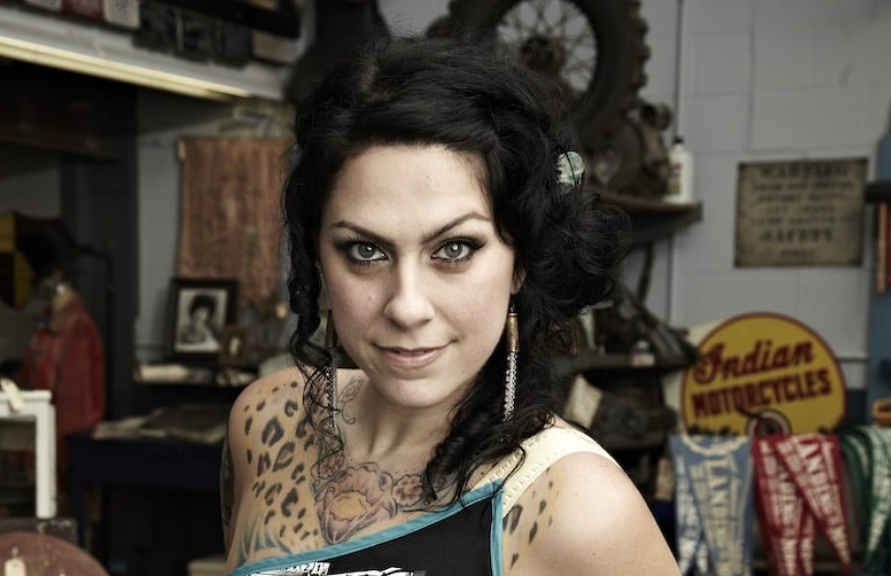

Danielle Colby, best known for her standout role on American Pickers, has carved out a unique space for herself beyond the world of antiques. She’s become a bold advocate for body positivity and self-expression, embracing her individuality through burlesque performance and a deep love for vintage fashion. Unapologetic and fearless, Colby’s personal journey has resonated with many who admire her confidence and authenticity.
Recently, however, some of her photos have stirred debate, raising questions about where the line lies between artistic freedom and public decency. As we explore Colby’s evolution as an artist and influencer, it’s clear that her imagery and message continue to provoke strong reactions—both supportive and critical. Her story is one of empowerment, creativity, and the ongoing tension between personal expression and societal norms.
Danielle Colby’s Public Persona and Advocacy for Self-Expression
Danielle Colby rose to fame as a co-star on American Pickers, captivating audiences alongside Mike Wolfe and Frank Fritz as they unearthed hidden treasures across America. While her knowledge of antiques and vibrant on-screen personality earned her widespread admiration, Colby’s identity extends far beyond the world of picking. Her deep-rooted passion for burlesque dancing and vintage fashion has become a powerful extension of her commitment to self-expression and authenticity.
As a burlesque performer, Colby has championed body positivity and the importance of confidence in one’s own skin. She views burlesque not just as entertainment, but as a form of empowerment—a celebration of individuality and natural beauty that defies narrow societal standards. By stepping into the spotlight unapologetically, she challenges cultural norms and encourages others, especially women, to embrace who they are without shame.
Colby’s love for vintage fashion seamlessly aligns with her advocacy. Known for her distinctive retro style, she uses clothing as a creative outlet, blending nostalgia with personal flair. Her fashion choices are more than aesthetic—they reflect a philosophy rooted in preservation, individuality, and the freedom to express oneself boldly and authentically.
Whether through the theatrical world of burlesque or her curated vintage wardrobe, Danielle Colby continues to use her platform to inspire confidence, promote self-love, and remind others of the power in embracing what makes them unique.

The Role of Social Media and Public Image
In recent years, Danielle Colby has used social media as a powerful tool to share a deeper, more personal side of herself. Platforms like Instagram have become a space where she highlights her passions—ranging from vintage fashion and burlesque to her advocacy for body positivity. Through candid posts and behind-the-scenes glimpses, Colby has cultivated an authentic online presence that reflects her values and creative spirit.
Many of her followers praise her openness, celebrating her for embracing her body and challenging traditional beauty standards. Her unapologetic posts often inspire fans who admire her confidence and the way she uses her platform to promote self-acceptance. However, not all responses have been positive.
Some of Colby’s more revealing photos—featuring risqué outfits or artistic nudity—have sparked controversy. While supporters view them as empowering expressions of individuality and art, critics argue that such content may clash with the image of a public figure associated with a family-oriented show like American Pickers. This tension has ignited broader conversations about the expectations placed on public figures: Should they conform to conventional standards tied to their professional roles, or are they entitled to personal expression, regardless of public perception?
Colby’s experience highlights the ongoing debate over authenticity versus public image in the digital age. Her social media presence challenges viewers to reconsider the boundaries of self-expression and raises important questions about how society views women, art, and autonomy—especially when the lines between personal and professional identities become increasingly blurred.

Body Positivity and Confidence in the Public Eye
Danielle Colby’s commitment to body positivity is a defining element of her public persona. In a media landscape saturated with unrealistic and often unattainable beauty standards, Colby offers a refreshing counter-narrative. By embracing her natural body and proudly showcasing her curves, she has become a powerful role model for those who have felt excluded or misrepresented by mainstream ideals.
Colby’s bold imagery isn’t about seeking attention or creating controversy—it’s about reclaiming her body on her own terms. Through her photos, she sends a clear message: beauty exists in many forms, and confidence is not reserved for a specific size, shape, or age. Her posts are a celebration of diversity and a challenge to the heavily filtered, retouched standards that dominate much of popular culture.
Critics may question whether her provocative content aligns with her role on American Pickers, a show with a broad and often family-oriented audience. But Colby herself has addressed this tension with clarity and conviction. For her, there is no contradiction between being a professional on a successful TV show and expressing herself as an artist and advocate for self-love. Her social media presence is simply another layer of her multifaceted identity—one that blends creativity, empowerment, and authenticity.
In Colby’s view, there should be no limitations on self-expression. Her journey reflects a broader cultural shift toward embracing individuality and dismantling outdated norms. By staying true to herself, she not only inspires others to do the same but also redefines what it means to be confident and visible in the public eye.

The Divide: Supporters and Critics
Danielle Colby’s bold public image has sparked a clear divide in public opinion. On one side are her supporters—many from the body positivity and burlesque communities—who praise her for her courage, confidence, and unwavering commitment to self-expression. To them, Colby is a trailblazer, using her platform to challenge narrow beauty standards and promote a message of empowerment and self-love. Her transparency and artistic flair are seen not just as personal choices, but as acts of advocacy in a world that often polices women’s bodies.
On the other side are her critics, who argue that some of Colby’s more revealing photos may be inappropriate for a public figure tied to a family-oriented show like American Pickers. These detractors suggest that her online content, particularly when it leans into risqué or suggestive territory, could conflict with the professional image expected from someone associated with a mainstream television network. For them, the concern lies in the perceived mismatch between Colby’s role on the History Channel and the more provocative aspects of her personal brand.
This clash raises broader questions about how much freedom public figures truly have in expressing themselves—especially women in the entertainment industry. Should they be expected to conform to the expectations tied to their professional roles, or allowed to define their image on their own terms? Danielle Colby’s case exemplifies this cultural tension, standing at the intersection of personal empowerment and public scrutiny.
The Balance Between Artistic Expression and Public Persona
At the core of the conversation surrounding Danielle Colby is a larger cultural question: how do public figures navigate the delicate balance between artistic freedom and societal expectations? As someone in the spotlight, Colby experiences both praise and pushback for the way she presents herself—particularly when her content challenges traditional ideas of what’s “appropriate” for a public figure.
Supporters argue that Colby has every right to share her body and express her artistry without being subjected to moral judgment. They view her as part of a broader movement advocating for body autonomy, creative freedom, and the dismantling of outdated norms. Her openness is not just personal—it’s political, helping to normalize diverse expressions of identity.
On the other hand, critics suggest that public figures—especially those associated with widely viewed, family-friendly programming—should uphold a certain image. They contend that when personal content becomes too provocative, it risks overshadowing or even undermining a celebrity’s professional reputation.
This debate speaks to a wider tension in the age of social media. Platforms like Instagram and Twitter have blurred the lines between personal lives and public roles. While some celebrities opt for carefully curated profiles, others—like Colby—choose transparency, even if it stirs controversy. In doing so, they redefine what it means to be a public figure, showing that self-expression doesn’t have to come at the cost of professionalism.
Ultimately, Colby’s approach invites us to rethink the limits we place on public personas—and to ask ourselves whether those limits serve expression, or simply enforce conformity.

Conclusion: Embracing Confidence and Individuality
anielle Colby’s public image is anything but one-dimensional. Her fearless approach to self-expression—whether through burlesque, vintage fashion, or striking social media posts—continues to challenge cultural norms and ignite meaningful dialogue. To many, her boldness is a celebration of body positivity and artistic freedom; to others, it may cross lines of what they believe is acceptable for someone in the public eye.
Regardless of where one stands, what’s undeniable is Colby’s unwavering commitment to authenticity. Her refusal to conform to narrow expectations has not only earned her a loyal following but has also positioned her as a respected figure within the artistic and body-positive communities. She’s used her platform to advocate for self-acceptance and to show that confidence and individuality are powerful tools for change.
As conversations around her images persist, they reflect broader questions about identity, public scrutiny, and the space public figures occupy in the digital era. Colby’s journey is a reminder that self-expression, even when controversial, can be an act of empowerment—and that embracing who we are, unapologetically, may be the boldest statement of all.
Sources:
- BBC News – Body Positivity and Public Figures
- The Guardian – Women’s Empowerment and Media
- Mayo Clinic – Body Positivity and Mental Health


